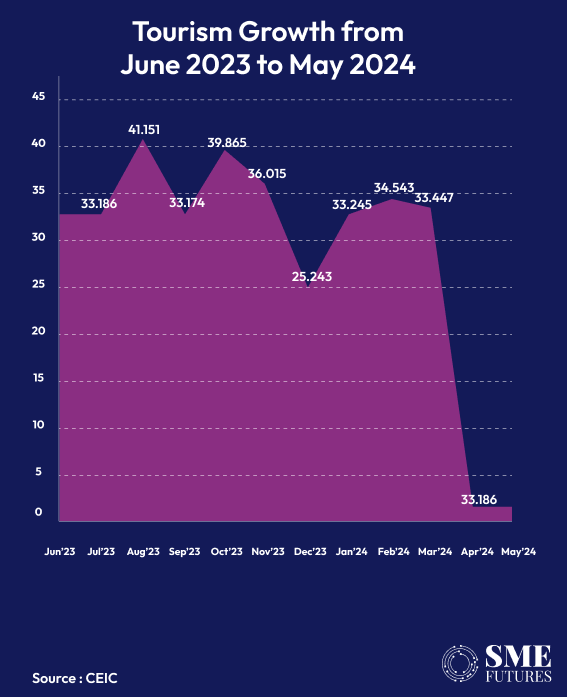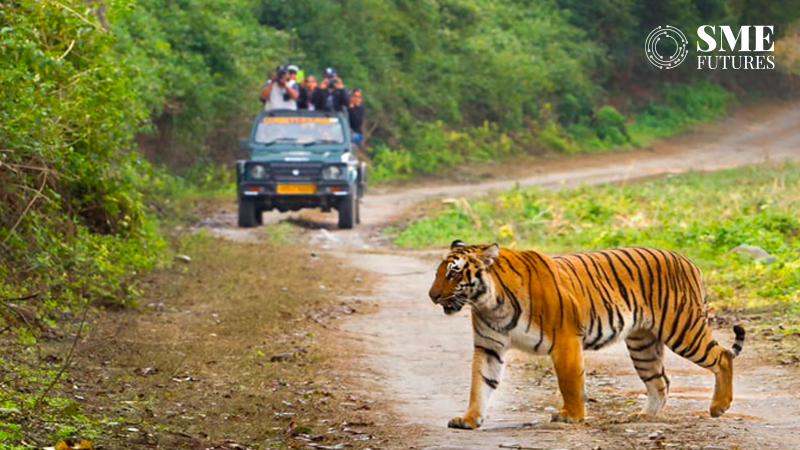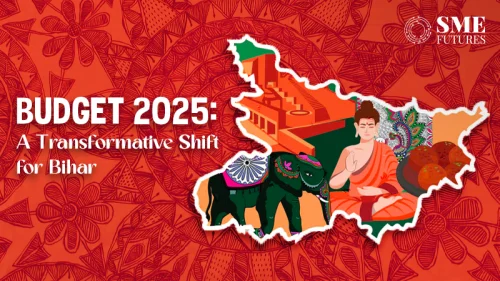India is a naturally endowed and diverse nation in terms of wildlife and breathtaking landscapes. Undoubtedly, tourism draws a lot of revenue to the country. People from not only within the country but from around the world are eager to explore the natural richness, vibrant culture, and beauty of India. In fact, wildlife or jungle tourism has been capturing the attention of a large number of tourists for decades. Consequently, the Government of India is substantially investing in wildlife and jungle tourism.
It’s business
Wildlife tourism, a branch of ecotourism, has been steadily gaining momentum in India, recording a CAGR of 15 per cent in tourist visits up until 2020, as per government and media sources. This segment has distinguished itself as a luxury experience, drawing visitors for various reasons. Between 2016 and 2020, the average rates for resorts in wildlife tourism destinations in India grew at a CAGR of approximately 3 per cent, with annual occupancy levels hovering around 30-35 per cent.
The mandatory three-month closure of all national parks during the monsoon and breeding seasons contributes to these relatively low annual occupancy rates. However, most resorts are fully booked during the peak season, with booking lead times ranging from 3 to 12 months, reflecting a market that is not meeting demand.
The deliberate absence of urban development and commercial establishments in these areas enables hospitality businesses to offer primarily all-inclusive (AP) plans at their accommodations. This arrangement benefits the resorts, as the costs associated with meals and additional activities can be managed to boost profitability. Overall, hospitality establishments in these regions typically achieve a gross operating profit (GOP) of 30-40 per cent annually. Given the high seasonal demand, robust profit margins, and government initiatives to develop more wildlife destinations across India, the market is ripe for further growth, particularly since many of these locations are underserved. For example, the top 10 wildlife markets in India currently offer only 1,500+ quality hotel rooms, of which 36 per cent are branded establishments.
Another benefit is that saving and protecting forests, and the natural richness of the earth are vital for maintaining a healthy ecosystem. Already, a lot of damage has been done to greenery and wildlife for building infrastructure for modern city life. So, investing in jungle infrastructure is just a small initiative towards mitigating these losses.
The overall tourism revenue growth in India was 1.7 per cent YoY in May 2024, compared to the increase of 1.2 per cent YoY in April 2024, according to CEIC. The following graph shows tourism growth in India from June 2023 to May 2024:

Government initiatives for promoting jungle tourism
Wildlife tourism in India is witnessing around 15 per cent of growth every year, setting an example for many other countries (Source: Conservation India). Therefore, the new initiatives by the government are expected to enhance this growth by attracting tourists from all around the world.
The Union Budget 2024 includes provisions for eco-tourism, the development of less-explored destinations, adventure tourism, and improving connectivity through roads and railways. Tourism in India contributes around 6.5 per cent to the GDP and provides employment through around 4.3 crore jobs. Developing more wildlife destinations will be a major factor in increasing the revenue and employment obtained through tourism.
Sudharshan Pathak, General Manager at Jungle Kuno Resort, Sheopur, Madhya Pradesh, says, “Since 2018, when Kuno Wildlife Sanctuary was given the status of a national park, an increase in the number of tourists visiting this place is being witnessed. Nature and safari lovers visit Kuno National Park to witness the beauty and richness of this dense forest. The best part of this deciduous forest eco-region is that there is minimal human interference in terms of inside infra, and primarily, it is a virgin forest. There are several safari points in this forest area, which let one discover jungle life, rivers, streams, and hills.”
He adds, “The government is still investing in the expansion of the safari regions and is adding more land to Kuno National Park. This will surely attract investors who want to start their food ventures, hotels, shops, etc. Such initiatives will popularise the region more and enhance local development. Local people will become more aware of modern lifestyles, and the scope of employment for local youth will widen,”
“Here, at our Jungle Resort Kuno as well, we have a good team of local staff which serves our guests from different parts of the country. I feel that more development will attract foreign tourists as well. We host foreign guests who come for professional reasons sometimes, but that is not enough. India is bountiful in nature, and I feel that Madhya Pradesh is a gem where each district is immensely endowed with natural beauty. The development of these remote and unexplored regions will take tourism to the next level,” he further says.
Well, taking the example of Kuno, it should be acknowledged that certain experiments attract safari lovers. For instance, the vast Kuno forest was considered a good habitat for cheetahs and is quite similar to some African forests. That is why eight cheetahs were transported from Namibia to Kuno forest in 2022, and then 12 other cheetahs were brought here from South Africa in 2023. This was done to study the creation of a suitable habitat for this feline species. Learning about their diseases, their reproductive process, their habits, and their causes of death will enable the development of the best-suited habitats for them.
Also, it will attract those safari lovers who desperately want to spot a cheetah. Only the lucky ones can get a glimpse of this animal. Local people assume that the cheetahs keep on moving and that they might have fled to Ranthambhore National Park in Khandar, Rajasthan. So, there are certain travel enthusiasts who would want to visit Ranthambhore as well, which is connected and somewhat similar to Kuno National Park. In fact, Ranthambhore National Park is a reputed and awesome forest region to explore.
Budget announcement gives hope
This year’s union budget is giving hope that better infrastructure development will be promoted in forest regions so that travellers from around the world will not face any problems during their stay here. Better connectivity through roads and railways will further boost the sector. Also, any forest region has certain other attractions like forest carnivals, nearby villages, rivers, fun clubs, etc. If the infrastructure and connectivity development is done in a systematic manner, tourists will have a better chance to visit each attraction and enjoy the local flavours apart from the beauty of the forest.
As per the travel budget this year, the government will be assisting the development of wildlife sanctuaries in Odisha, which will make the state a major tourist attraction for jungle lovers. Natural landscapes, pristine beaches, and classy infrastructure will boost the economy of the state. Similarly, spiritual and cultural hubs in India, which are known for their wildlife connection, are also to be taken care of by the tourism ministry. Bodh Gaya, Nalanda, and Rajgir are among such hotspots. All around the country, tourist centres that promote their distinct wildlife offerings will be enhanced. Such an approach to tourism will establish the diverse landscape of India with its distinct climates, forests, flora, and fauna as one of the most sought-after wildlife tourist spots globally.
Investing in jungle tourism boosts businesses
Eateries are among the major attractions of any tourist destination. As a traveller, one wishes to explore the famous delicacies of any place that one visits. And this is one of the main reasons behind why restaurant owners prefer to run their ventures near jungle safari points or sanctuaries.
Restaurants that use agroforestry techniques or procure ingredients from forest reserves provide special menu items that are obtained locally. This boosts biodiversity and sustains regional ecosystems in addition to making the food look and taste better. Restaurants that emphasise environment-friendly dining options could attract customers by emphasising these sustainable practices and create an eco-friendly brand image for themselves.
Not just restaurants, but other local businesses like artifacts, indigenous seeds, traditional clothing, etc. will gain momentum when tourism takes off. Carnivals, trade fairs, and local exhibitions can be an added attraction as well.
Vikram Gautam, a local guide in Kuno forest, says, “I am from Bamauli village in Sheopur district. Here, I work as a local guide for tourists who like to go for a safari ride in Kuno jungle via their personal four-wheelers. I drive them through the forest. I must say that this naturally rich region has developed in the last few years due to the Kuno National Park. Cheetahs that were imported from Africa have started attracting more tourists in recent years. Also, shops and eateries have opened in nearby areas. I witnessed that during the Kuno festival in December all the rooms and suites in the Jungle Kuno Resort were booked. The local shops and food stalls also did good business. That was a good time for me too, as I got some nice tips. Though the guests didn’t spot a cheetah, they were glad to see some other wild animals and birds. It was a nice experience.”
Although Kuno is still not as famous as the other popular sanctuaries and forest areas of India, the efforts put in by the government and the locals will surely popularize the region and its surroundings. Moreover, restaurant owners, shopkeepers, tour guides, drivers, etc. will find it easier to earn well when the number of tourists is higher during the peak seasons. Tourists prefer to pay for different services and products that let them explore the local culture, which benefits the local economy.
In India, wildlife tourism is a promising business that combines environmental preservation with economic development. Because of the government’s recent initiatives, community involvement, and dedication to conservation, the wildlife tourism industry in India is expected to flourish in the future. Wildlife enthusiasts from around the country and the world definitely have a lot to look forward to.











